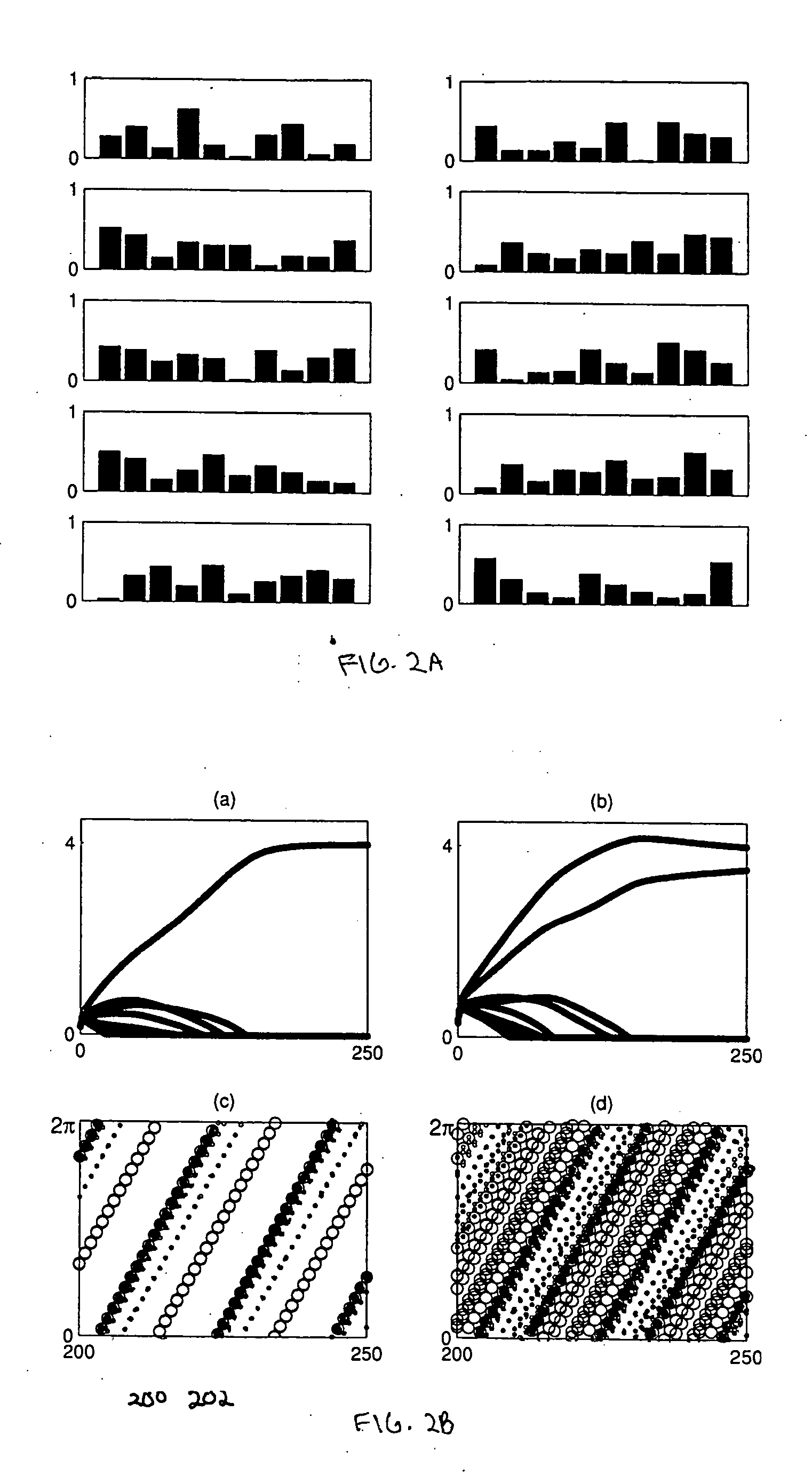Deconvolution and segmentation based on a network of dynamical units
- Summary
- Abstract
- Description
- Claims
- Application Information
AI Technical Summary
Benefits of technology
Problems solved by technology
Method used
Image
Examples
Embodiment Construction
[0025] Referring to FIG. 1A, there is shown a block diagram of a learning (neural) network 100 according to an embodiment of the invention. The network 100 comprises a plurality of units (e.g., neurons) in an input (bottom) layer 102, a second plurality 104 of units in an output (upper) layer, and a feedforward connection 103 to each of the second plurality of units 104. FIG. 1B, shows the feedback 108 connection from the output layer 104 to the input layer 102. FIG. 1C shows the lateral connections 105 within the output layer 104.
[0026] The network 100 performs dynamical segmentation based on the idea that each of the network's units can be described in terms of an amplitude and a phase, and that the feedforward and feedback connections (excitatory or inhibitory) can affect the receiving unit's amplitude and phase in qualitatively different ways.
[0027] The input (bottom) layer 102 receives an input from an input signal 106. The network 100 comprises dynamical units. The amplitude...
PUM
 Login to View More
Login to View More Abstract
Description
Claims
Application Information
 Login to View More
Login to View More - R&D
- Intellectual Property
- Life Sciences
- Materials
- Tech Scout
- Unparalleled Data Quality
- Higher Quality Content
- 60% Fewer Hallucinations
Browse by: Latest US Patents, China's latest patents, Technical Efficacy Thesaurus, Application Domain, Technology Topic, Popular Technical Reports.
© 2025 PatSnap. All rights reserved.Legal|Privacy policy|Modern Slavery Act Transparency Statement|Sitemap|About US| Contact US: help@patsnap.com



